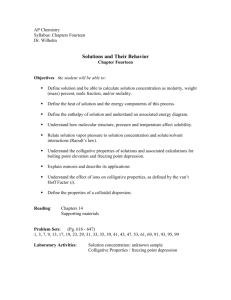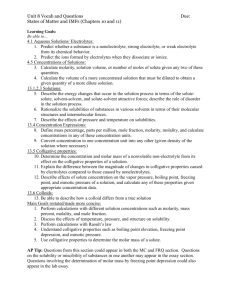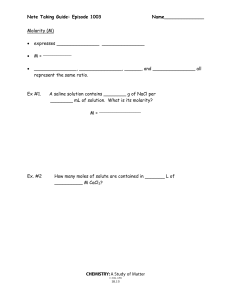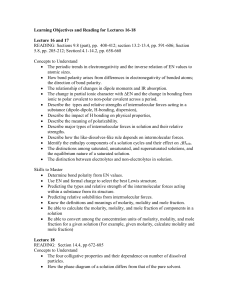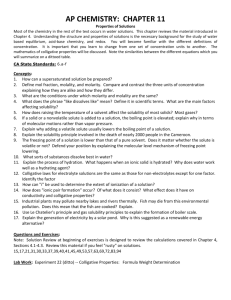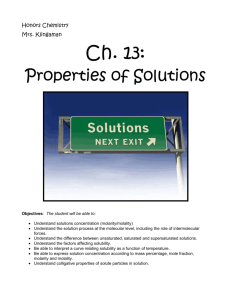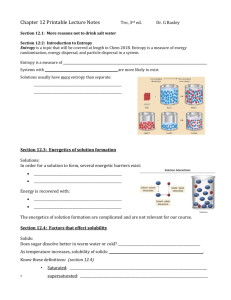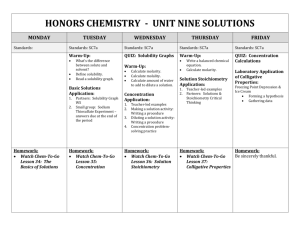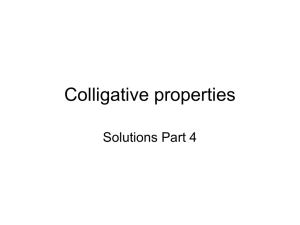Chapter 13: Properties of Solutions
advertisement
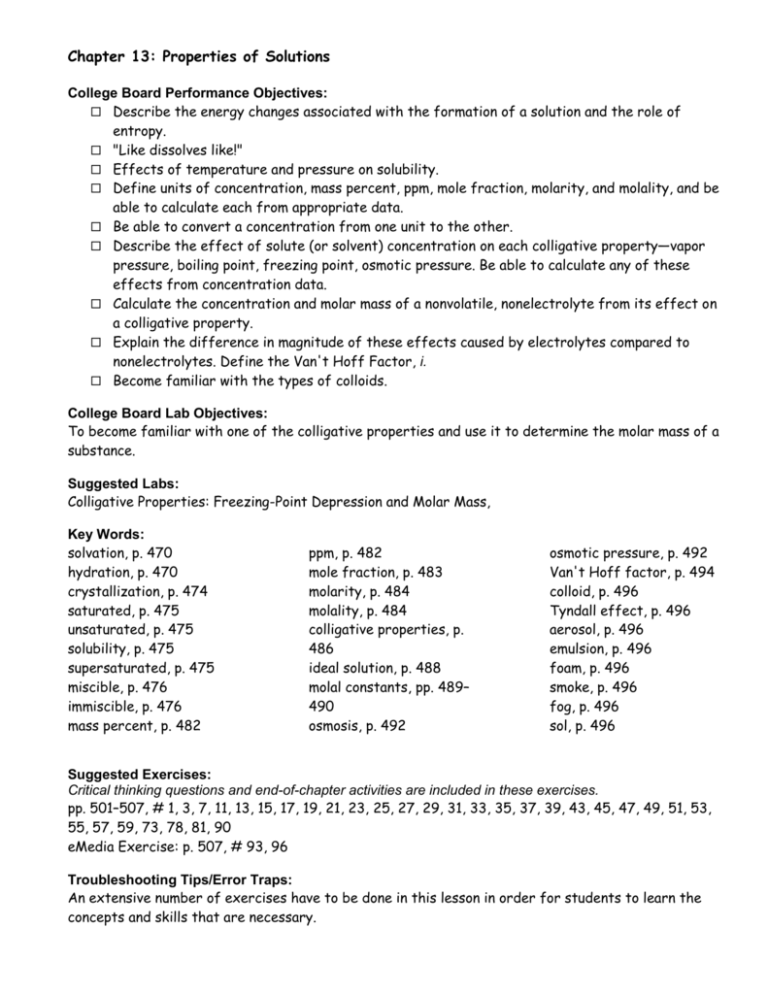
Chapter 13: Properties of Solutions College Board Performance Objectives: Describe the energy changes associated with the formation of a solution and the role of entropy. "Like dissolves like!" Effects of temperature and pressure on solubility. Define units of concentration, mass percent, ppm, mole fraction, molarity, and molality, and be able to calculate each from appropriate data. Be able to convert a concentration from one unit to the other. Describe the effect of solute (or solvent) concentration on each colligative property—vapor pressure, boiling point, freezing point, osmotic pressure. Be able to calculate any of these effects from concentration data. Calculate the concentration and molar mass of a nonvolatile, nonelectrolyte from its effect on a colligative property. Explain the difference in magnitude of these effects caused by electrolytes compared to nonelectrolytes. Define the Van't Hoff Factor, i. Become familiar with the types of colloids. College Board Lab Objectives: To become familiar with one of the colligative properties and use it to determine the molar mass of a substance. Suggested Labs: Colligative Properties: Freezing-Point Depression and Molar Mass, Key Words: solvation, p. 470 hydration, p. 470 crystallization, p. 474 saturated, p. 475 unsaturated, p. 475 solubility, p. 475 supersaturated, p. 475 miscible, p. 476 immiscible, p. 476 mass percent, p. 482 ppm, p. 482 mole fraction, p. 483 molarity, p. 484 molality, p. 484 colligative properties, p. 486 ideal solution, p. 488 molal constants, pp. 489– 490 osmosis, p. 492 osmotic pressure, p. 492 Van't Hoff factor, p. 494 colloid, p. 496 Tyndall effect, p. 496 aerosol, p. 496 emulsion, p. 496 foam, p. 496 smoke, p. 496 fog, p. 496 sol, p. 496 Suggested Exercises: Critical thinking questions and end-of-chapter activities are included in these exercises. pp. 501–507, # 1, 3, 7, 11, 13, 15, 17, 19, 21, 23, 25, 27, 29, 31, 33, 35, 37, 39, 43, 45, 47, 49, 51, 53, 55, 57, 59, 73, 78, 81, 90 eMedia Exercise: p. 507, # 93, 96 Troubleshooting Tips/Error Traps: An extensive number of exercises have to be done in this lesson in order for students to learn the concepts and skills that are necessary.
